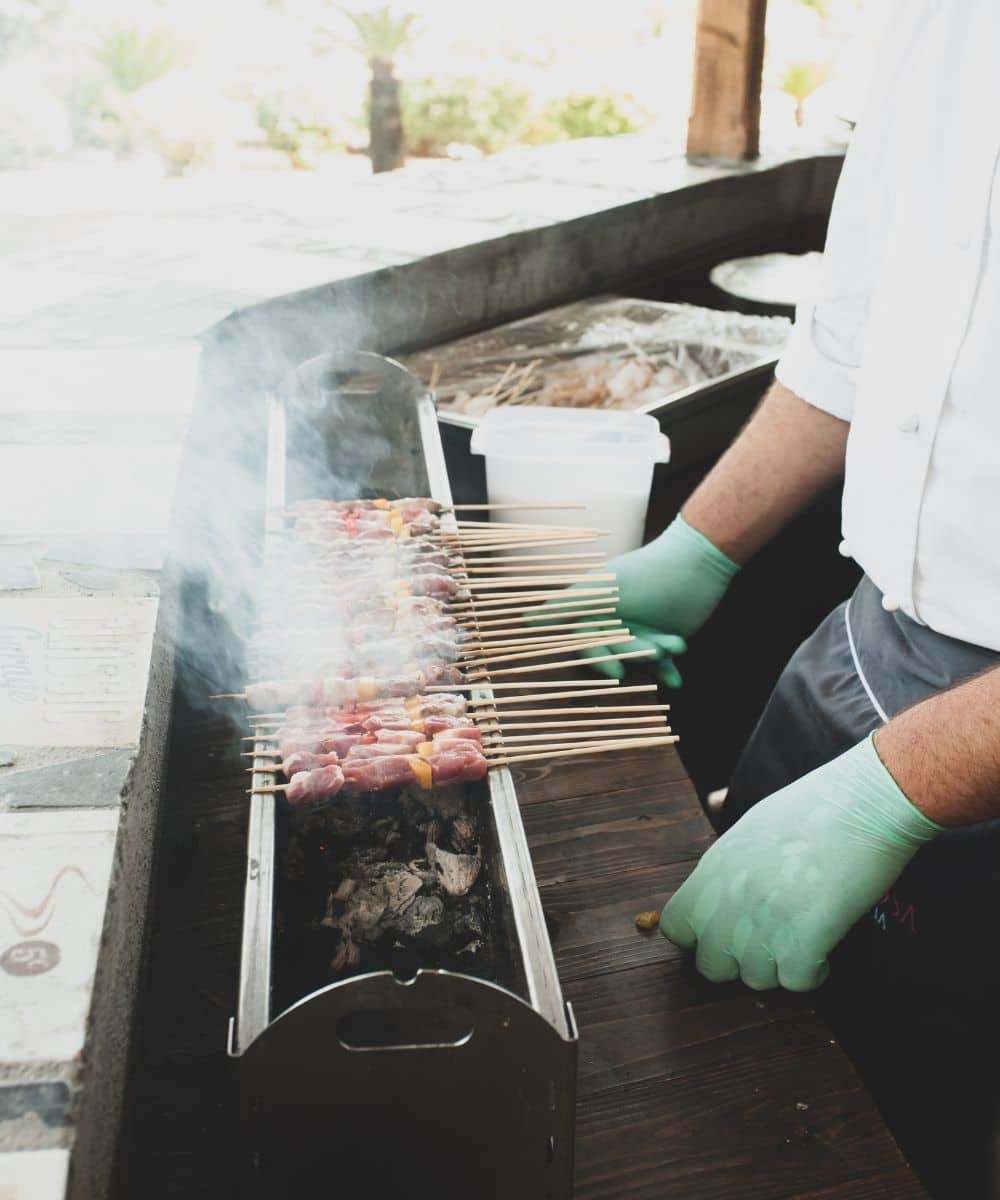The traditional Cusine of Abruzzo
Abruzzo is a region characterised by lush nature and green lands, with a strong pastoral and rural vocation. Over time, historical events and its geographical conformation have left this population isolated, forging the gastronomic identity of the area. In many ways, this isolation could be seen as an obstacle that has become a strength. From pastoral traditions to seafaring ones, Abruzzo boasts a multifaceted cuisine capable of adapting to the tastes of everyone and to all palates. As a matter of fact, it ranges from sea products to typical mountain products, from mussels to cheeses, from excellent first courses to delicious meats. The richness and geographical variety of the region, which offers mountain, hill and sea landscapes, is also reflected in the wide range of gastronomic offerings. Abruzzo cuisine, essentially Mediterranean in its ingredients and flavours, is both poor and noble at the same time, based on ancient tastes and simple but genuine raw materials.
Indeed, the real protagonists are cheeses, cured meats and dried meat products, not forgetting desserts and pastry, wine, liqueurs and oil. A versatility that will not disappoint even the most demanding gourmets.

Excellence and Slow Food products
Abruzzo food and wine is an authentic journey of taste and the genuine flavours of yesteryear. It is essential to say a few words about the typical specialities, considered real treasures of this land. They are regional excellences, many of them Slow Food products, linked to ancient or rare crops, production techniques or customs to be protected and safeguarded: L'Aquila saffron, Fucino potatoes, Sulmona red garlic, Santo Stefano di Sessanio lentils, Navelli chickpeas, Tavo round beans, Fara Filiorum Petri white onions, Abruzzo Apennine Solina wheat, Paganica beans, Abruzzo Apennine honey, ventricina vastese (pork sausage), liquorice from Atri, sweet peppers from Altino, artichokes from Cupello, cherries from Raiano and Giuliano Teatino, real dried figs from Atessa, liver sausage from L'Aquila, turquoise potatoes, sausages from Frentano, grapes from Montonico, olives from Intosso and truffles from Abruzzo.
Among the confectionery symbols, undoubtedly, we find the Confetti from Sulmona, famous and exported worldwide. The classic sugared almond consists of an almond praline (from Valle Peligna or the pizzuta d'Avola or Ragusa varieties) covered in sugar. Over time, this confectionery delight no longer exists only in its traditional classic flavour but is available in many versions: with hazelnuts, chocolate or a variety of equally tasty ingredients. They are usually packaged and grouped in flowers whose petals are sugared almonds.
Finally, wine has a centuries-old tradition thanks to the cultivation of a precious vine such as Montepulciano, a widespread red grape that accounts for more than half of the region's ampelographic base. This type of grape is the basis of Montepulciano d'Abruzzo Doc, a full-bodied and fruity red wine. The co-star of the region's wine production is the excellent white Trebbiano d'Abruzzo Doc.
With this short but intense overview of goodness, are you ready to discover the best 5 recipes from Abruzzo?
5. Arrosticini

Although not widely known, arrosticini are a typical speciality of this region. Be careful not to call them skewers in the presence of a person from Abruzzo! Even if they are skewers, they call them rustelle or arrustelle. This ancient dish, originally from the foothills of the Gran Sasso mountain in the province of Pescara, is widespread throughout the region. It is ancient and bears witness to the pastoral traditions of Abruzzo. Rustelle, consisting of chunks of sheep's meat threaded onto a skewer, are cooked on a particular grill, generally called fornacella. Suitable to be combined with any side dish, they are mostly enjoyed with sauces and potatoes. Some variants use chicken, but the authentic tradition is to use sheep meat!
4. Ferratelle
This typical cake takes its name from the double griddle (called ferro, the Italian word for iron) heated over the fire on which they are baked. Depending on the area, they are also called nivole or neole (in the province of Teramo) or pizzelle (in the province of L'Aquila). There is not a house in Abruzzo that does not have, among its kitchen utensils, an "iron" for making ferratelle. A few ingredients, mixed together, are transformed into the delicious waffle with its classic diamond-shaped ribbing. Eggs, sugar, flour, yeast and sunflower oil are the key and essential elements. Depending on taste and preference, you can add aniseed flavouring or a few drops of rum. Really easy to make, they come in both crispy and soft versions. The gluttons use to filling with cream or jam, but ferratelle are excellent also without adding anything. Finally, ferratelle with two waffles on top of each other and stuffed as you like are called coperchiole.
3. Pecora al Cotturo o alla Callara
Another traditional shepherd's recipe, this dish has its origins in the times of the Transhumance when shepherds moved with their flocks from the summer pastures of their mountains to the winter pastures of Puglia. Travelling along sheep tracks, they would reach the Tavoliere, a vast plain extending into the province of Foggia, bordered by the Subappenino and bordering on the Gargano promontory. As we can imagine, the journey was long and tiring for both shepherds and sheep. It could happen that some animals died or were injured during the impervious trip. Of course, the meat was not wasted and was marinated in wine for at least one night and then cooked by fire in a large pot supported by large branches. The callara or cotturo are, in fact, the cauldrons that gave their name to this ancient recipe, which is still very popular in Abruzzo. Usually, field herbs were added to flavour the meat, like spices. Sometimes, la pecora al cotturo (literally sheep cooked in the pot) is proposed with tomatoes, but the original recipe does not provide for this. It is a simple dish made with ingredients that are easy to find, precisely because shepherds heading for Apulia could not take much with them. A speciality that takes us back in time, to be savoured in all its goodness.
2. Brodetto di Pesce
A fish dish could not be missing, given that Abruzzo overlooks the sea and ranges across a great variety of environments and landscapes. Il brodetto di pesce or fish soup, very popular in the towns along the coast, is prepared with so-called poor fish, i.e. leftover and unsold fish. The leftovers from the sale have, therefore, given rise to this tasty dish. It is served hot in a crock pot, together with toasted bread. There are various versions, depending on the locality and area. However, the best known are brodetto alla giuliese (Giulianova, province of Teramo), brodetto alla pescarese (typical, of course, of Pescara) and brodetto alla vastese (Vasto, province of Chieti).
1. Spaghetti alla Chitarra
Spaghetti alla chitarra is a type of handmade fresh pasta that symbolises the culinary traditions of Abruzzo. When seen in section, they appear with their characteristic square shape, width, and thickness of about 2-3 mm. The name 'spaghetti alla chitarra' derives from the particular instrument to make them: a wooden frame on which parallel steel wires, resembling the strings of a guitar, are stretched. The pasta sheet is placed on the guitar, and the rolling pin is passed back and forth. In this way, the pressure of the rolling pin causes the wires to cut the big spaghetti. In practice, the cut coincides with the fall of the dough into the area below the frame itself. The porosity and thickness of the type of pasta allow the sauces to adhere perfectly and make the dish even more special. They are excellent with a simple tomato and basil sauce, a lamb ragù sauce, a mixed ragù sauce of beef, pork and lamb. No less popular are sauces with wild boar, hare or game, truffles or mushrooms. Moreover, spaghetti with meatballs (called 'la chitarra nghe li pallott' in the local dialect) is delicious.
This is just the beginning of a journey to discover the flavours of a region with a rather rich and vast culinary tradition, impossible to enclose in a few words. If your mouth is watering, what are you waiting for to visit Abruzzo?
Abruzzo's cuisine is undoubtedly of pastoral extraction; although Abruzzo has wide beaches, fish is not a typical food from Abruzzo.
About the author
Written on 28/08/2021



Alessandra Festa
A journey through the flavours and traditions of Abruzzo, a region with a rich gastronomic variety. You will be charmed by the wide range of typical dishes and specialities from the sea to the mountains.